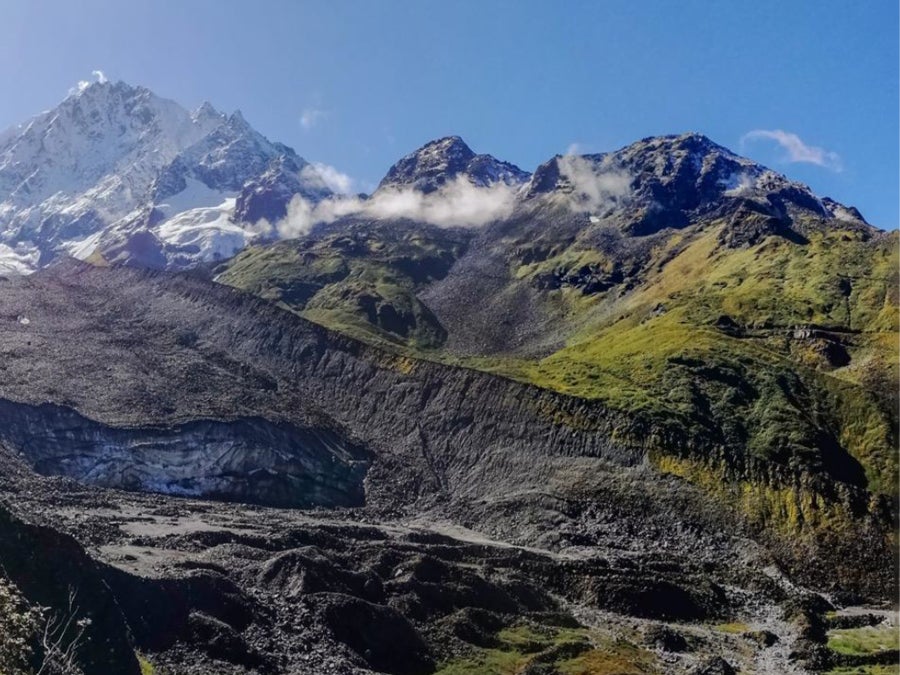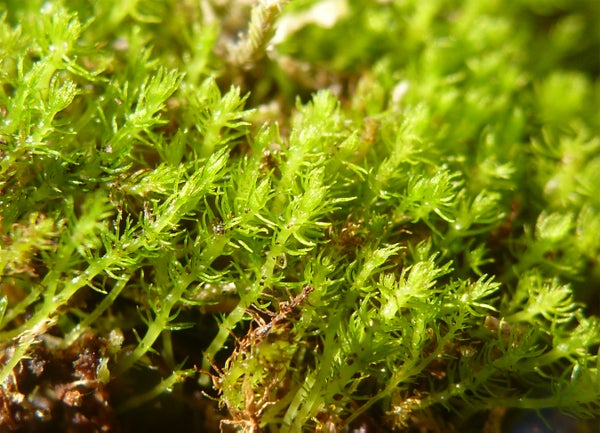CLIMATEWIRE | For nearly 400 million years, the world’s oldest moss has survived the shifting landscapes of planet Earth.
Takakia, as the genus is known by scientists, has lived through ice ages and mass extinctions, and endured age after age of natural warming and cooling. It outlasted the dinosaurs, and it was there when the first mammals walked the Earth.
The moss even survived the violent birth of the Himalayas 50 million years ago, when the then-island of India crashed into Asia and raised the mountains out of the ground. It still grows there today, high on the mountain peaks, in one of the coldest and harshest environments on Earth.
On supporting science journalism
If you're enjoying this article, consider supporting our award-winning journalism by subscribing. By purchasing a subscription you are helping to ensure the future of impactful stories about the discoveries and ideas shaping our world today.
Yet Takakia may have finally met its match. Human-caused climate change is raising global temperatures faster than it can adapt, threatening the soft, green moss with extinction.
If global temperatures continue to climb at their current rate, scientists warn, it could disappear from the Himalayas within 100 years.
That’s the bleak conclusion of more than a decade of continuous research in the snowy Tibetan Plateau at the edge of the Himalayan mountains. Scientists published their findings Wednesday in the journal Cell, warning that after “nearly 400 million years of evolution and resilience, this species is now facing extinction.”
The Tibetan Plateau is one of the few places on Earth where Takakia exists today, and it's the only location where both its species — it only has two — coexist in the same spot. One species or the other also can be found in remote corners of western North America, Japan and other parts of East Asia.
It’s been a source of scientific intrigue for more than 150 years. Takakia was discovered in the Himalayas by scientist William Mitten in the early 1860s — but he wasn’t immediately sure what it was. He thought at first that it might be a liverwort, a kind of organism similar to, but separate from, mosses.
It wasn’t until the 1990s that scientists realized Takakia was actually a moss. They then renamed it in honor of scientist Noriwo Takaki, one of the researchers who recognized its unique characteristics.
Since then, scientists have pieced together how special the organism is. Molecular studies suggest that Takakia probably diverged from its earlier, now-extinct evolutionary ancestors about 390 million years ago. That means it likely has existed on the planet longer than any other land plant known to science.
Outwardly, it hasn’t changed much in millions of years. The oldest Takakia fossil ever discovered dates back 165 million years — and it looks much the same as the modern Takakia that blankets the Himalayas.
In 2005, a team of researchers from China discovered a population of Takakia in a southern corner of the Tibetan Plateau, nestled more than 13,000 feet above sea level. The researchers decided to set up a series of study sites in the area, visiting twice a year and collecting information on soil composition, temperature and other environmental data.

Geomorphological view of the Takakia field study site near Gawalong East Glacier, altitude 3,800-4,400 meters, at Bomi County, Tibet, China. Credit: Dr. Ruoyang Hu/Capital Normal University, Beijing, China
Temperatures in the area have been rising for decades. But the research team found that they skyrocketed between 2010 and 2021, rising by an average of about 0.77 degree Fahrenheit each year. It’s the fastest temperature increase recorded anywhere in the world at such high elevations, according to study co-author Ralf Reski, a professor of plant biotechnology at the University of Freiburg in Germany.
Some plants are able to adapt to warming temperatures at high elevations, he noted, retreating farther up the mountainside as time goes on. But “Takakia probably will not be able to do this,” Reski said — at least, not quickly enough to keep pace with human-caused climate change.
The research team found that Takakia populations in the area already have declined by about 1.6 percent each year since 2010.
The team is still working to figure out why Takakia is struggling so much with modern-day warming — especially after it’s weathered millions of years of environmental change. But they have some ideas.
After conducting genetic analyses, they found that it’s highly adapted to the harsh, high-altitude conditions where it grows. It’s well-suited to the cold, and it also has evolved to withstand strong exposure to ultraviolet radiation from the sun — a feature of high elevations, where the air is thinner.
Takakia probably developed these adaptations rapidly during the thunderous uplifting of the Himalayas around 50 million years ago.
“Our analysis results show that Takakia has evolved much faster than other mosses surveyed in this region,” said study co-author Yikun He, a biology professor at Capital Normal University in China and a leader of the research team that set up the study site on the Tibetan Plateau, in an email to E&E News.
Yet its remarkable evolution may now be working against it, the scientists theorize. Takakia is so highly adapted to its environment, and the area is heating up so swiftly, that it may be struggling more than less specialized plants.
And if global temperatures keep on rising, 390 million years of evolutionary history could abruptly vanish from the face of the Earth.
There’s still much more work to be done to understand what’s happening to Takakia — not just in the Himalayas, but elsewhere around the world. Future studies should seek out Takakia populations in places such as Canada or Japan to investigate how they’re faring as the climate warms, Reski suggested.
Meanwhile, the research team is growing more Takakia in a laboratory setting. And it’s working on an experimental project, transplanting Takakia into new locations at higher altitudes in the Tibetan Plateau, to see how it survives.
At the same time, world leaders are striving to halt climate change and keep global temperatures within 1.5 or 2 degrees Celsius of their preindustrial levels, the primary goals of the Paris climate agreement.
It’s still unclear whether those targets will be enough to save Takakia. But its current plight carries some important lessons about the rapid changes humans are wreaking on the planet — and an extra nudge to stop them.
“Takakia saw dinosaurs come and go, it saw us humans come, and now we can learn something about resilience and extinction from this moss plant,” Reski said. “You can look back through the whole history of our life and also the future. From this angle, it’s very interesting because it gives us hope that we can do something.”
Reprinted from E&E News with permission from POLITICO, LLC. Copyright 2023. E&E News provides essential news for energy and environment professionals.
